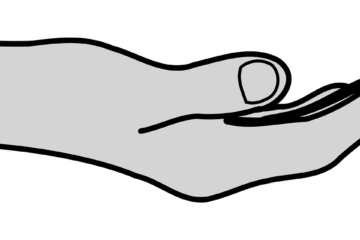Dental insurance isn’t really one of the topics that most people think about on a daily basis.. However, knowing how dental insurance works is really important to the adulting process. You should decide if you need dental insurance, how much it costs, what it pays (and does not pay) for, and how long you have to wait to use it. So let’s do a brief overview of how dental insurance works and how you can decide if it is worth it for you.
Do You Even Need Dental Insurance?
In most cases, yes. But there are a couple circumstances that you may not need (or want) to purchase dental insurance.
If you do not currently have any teeth problems, you brush and floss regularly, and generally take care of your oral hygiene, you might consider forgoing dental insurance.
The average cost of a teeth cleaning and annual exam is $90-120. Depending on what your premiums are, it might be more cost beneficial to just pay for cleanings and checkups out of pocket. Just remember, that if something big happens and you need some major dental help, you will have to pay out of pocket for it!
The other circumstance that you may not need dental insurance is if you have good healthy teeth and only go to the dentist for checkups and cleanings AND you are otherwise healthy AND you have an HSA.
An HSA will help you to save money for those medical expenses tax-free. That means that you can pay for dental exams and cleanings up front or with your HSA. And if you were to have something big happen where you needed a root canal, implant, chip repair, etc, then you can dip into your HSA.
And of course, if you have $10 million in your bank account, you may not need dental insurance because you are loaded.
But generally that is not the person that I am writing to in this blog. 🙂
There are seven main parts to dental insurance. It is much like health insurance, except that there are generally wait times before you can start to use your dental benefits.
(1) In/Out of Network
The first main concept of how dental insurance works that you need to understand is the difference between “in network” and “out of network”.
This works nearly identical to health insurance.
Nearly all dental insurance plans have dentist, clinics, hospitals, doctors, etc. that they have “partnered” with to offer dental care. These are called in network providers.
Any dentist, clinic, hospital, doctor, etc. that is not in-network, is therefore out of network.
Whenever you need to go see a dentist do your best to go to an in network provider.
In network providers will have pre-negotiated rates with the insurance company. They will nearly always be cheaper than the out of network counterpart and the billing process will be smoother.
If you don’t know if a service is in network or out of network, just give them a call and tell them who your insurance is. (You’ll probably have to have your insurance card to verify the plan number, group number, etc.)
(2) Waiting Period
Sometimes with dental (and health insurance) there can be a wait time before you are allowed to have a claim on your dental insurance.
This is a way for the dental insurance company to make sure that you don’t start a new job with dental insurance, pay the premium for one or two months, and then have a huge claim and drop the coverage.
Not all dental insurance plans have wait times, but they seem to be more common than wait times for health insurance plans.
(3) Services Usually Covered for Free if You Have Dental Insurance
Another major topic of how dental insurance works is preventative care. As a general rule, preventive services are going to be automatically covered free of charge if you have dental insurance. Depending on the dental insurance company, the list of free services will vary. But generally the services will include:
- Annual check-up
- Annual x-rays
- Two cleanings per year
This will, of course, vary from provider to provider, but generally most dental insurance companies will cover these items.
(4) Premiums
Premiums are usually pretty easy to understand. Premiums are simply the payment that you make toward your dental insurance every month, every paycheck, etc.
If you see that $25 was taken out of your paycheck for dental insurance, that was your premium.
It’s important to note that you will have to pay your premiums no matter what. Even if the dental insurance is maxed out for the year, you will still pay the premiums unless you cancel the insurance.
(5) Copayments/Coinsurance
The next part of how health insurance works are copayments (sometimes called coinsurance).
Focus on the first part of the word “copayments”. Co means together. So a copayment means that you and the insurance company will pay for the service together.
Most dental insurance companies have some sort of copayment structure. And the copayments are usually a flat dollar amount. They are usually $10-50.
You might have to pay a copayment when you see a specialist or have a extraction or something to that effect.
So let’s say that you have to go to an endodontist doctor because you need a root canal. When you go into the office the entire bill might be $500. But you will likely have to pay your copay before you leave. You might have to pay something like $30 right then.
That is not to say that you won’t get a bill later. You likely will.
Think of it as the dental insurance company wanting you to have a little skin in the game. They want you to pay a little up front before they pay some (or all of the bill).
Not all services require copayments. Usually any preventative care will not require a copay.
Make sure to check your dental insurance plan to know what yours is.
(6) Cost Sharing
Unlike health insurance, dental insurance usually doesn’t have a deductible. Generally, dental insurance is simply a cost sharing arrangement.
This means that if you have to go to the dentist for a tooth extraction that costs $100 and you have an 80/20 cost sharing arrangement, the dental insurance company will pay $80 while you pay $20.
This generally is not in addition to a copay. You will usually pay one or the other.
However, if you copay was only $10, you would have to pay that before you left the dental office and then you would get a bill in the mail for another $10 later.
Dental insurance plans vary on what the cost sharing amounts are, but an 80/20 split for an in-network dentist is pretty normal.
(7) Maximum Payout
This is the biggest difference between how dental insurance works differently than health insurance.
Health insurance has a max out of pocket amount which means that after you pay a specified dollar amount for the year, the insurance company will pay 100% of everything afterward.
Dental insurance is the opposite.
The dental insurance company will only pay out a specified dollar amount per year. After that, YOU are responsible for 100% of the dental bills that come in.
Max payout amounts range widely. But I have seen several in my time as a financial coach that are around $2,000 per year/person.
Final Thoughts
Here’s how I handle dental insurance.
I hadn’t been to the dentist in YEARS until a few years ago. I had bad teeth. After I got dental insurance, I went to the dentist and he came up with a treatment plan of all the problems that I had with my teeth and the order in which to fix them.
Some of the problems were worse (and thus, more urgent) than others.
The office manager of that clinic helped me put together a plan so that my dental insurance would cover the most of the costs as possible.
That meant that it took me about three years to get my teeth in really good shape.
Each year I maxed out my dental insurance coverage and I took my time getting all the work done.
If you are in a similar place, then just take your time. Save the money to pay your portion of any work that you need to have done to your teeth and chip away at it (no pun intended).
Above all, take care of your health. You only get one body. Make sure that you are treating it well. 🙂
I am here to help you all!
You can do this!
Until next time!



0 Comments